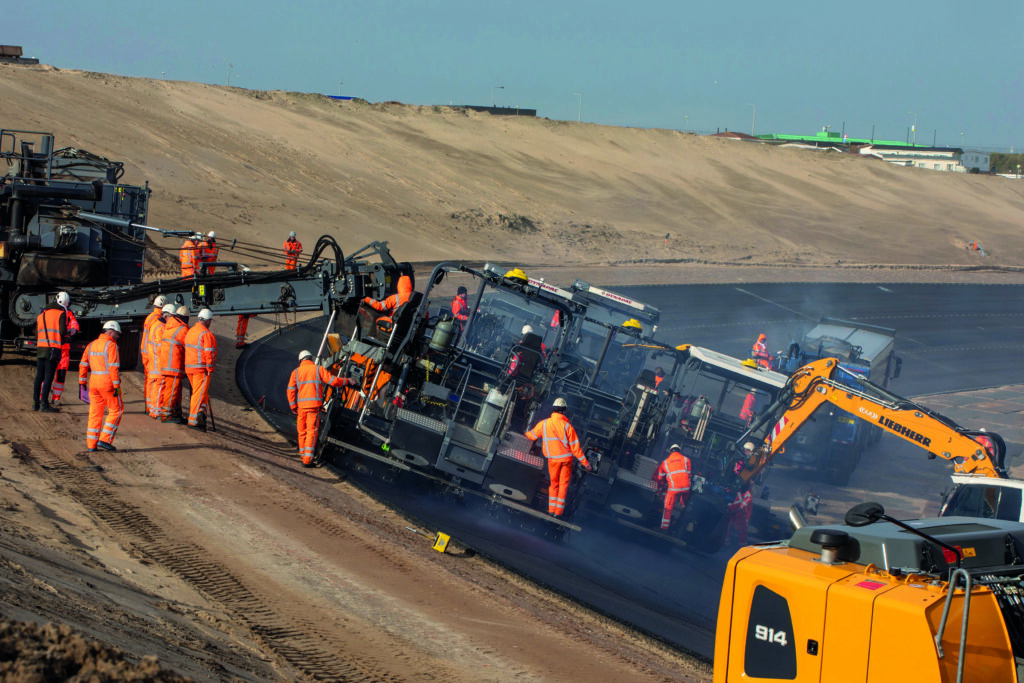The Netherlands is not famous for paradise beaches and luxury seaside resorts, yet Formula 1 has been eager to return to the small coastal town called Zandvoort. A few local organizations managed to convince Formula 1 management and later the FIA that the return of a Dutch Grand Prix was long overdue, the last edition having taken place in 1985.
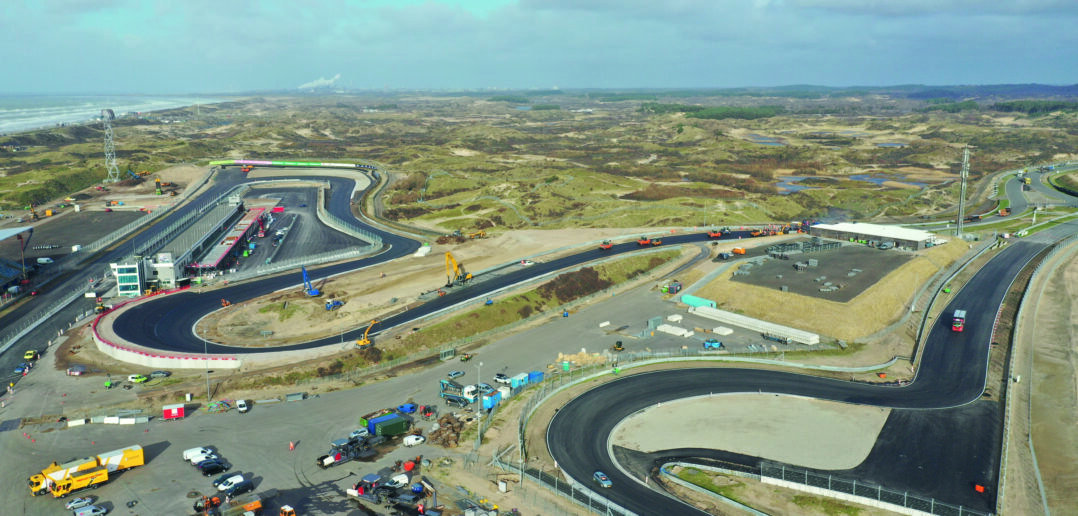
Formula 1 fans well into their 40s and people following European championships in the lower echelons of motorsport will be familiar with the historic Zandvoort racetrack. To others, the track was a far cry from its former glory. Yet despite being battered by salty North Sea winter gusts and blasted by sand and sun during the summer, the track was still able to attract motorsport fans by the tens of thousands with events like the Masters of Formula 3, A1GP, WTCC, DTM, and more recently the Jumbo Racing Days, aided by the rising fame of junior superstar Max Verstappen. But people closely involved with the track never stopped dreaming about the return of the premier league of motor racing. What looked like a desperate and increasingly unrealistic desire suddenly became a very real possibility and then even a promise.
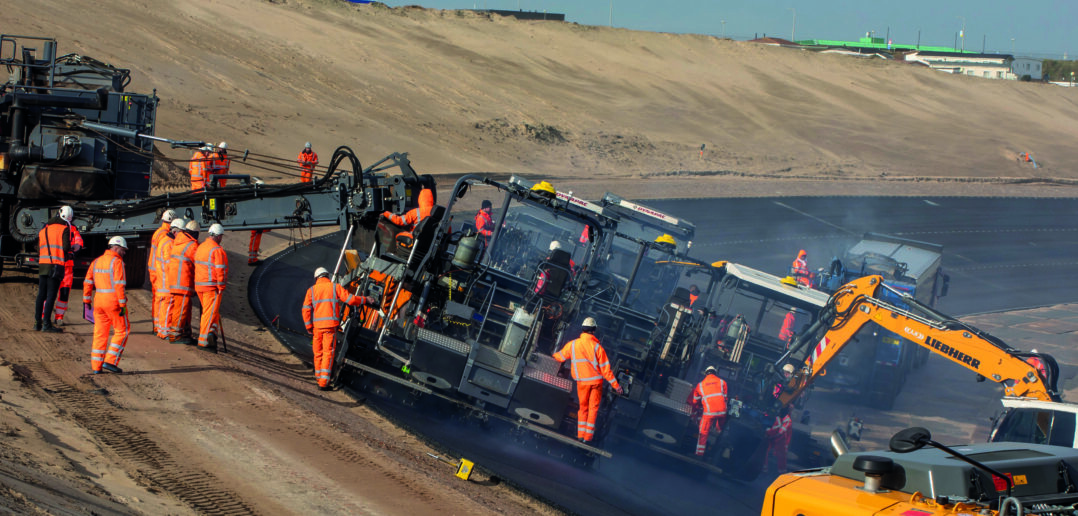
In 2016, Prince Bernhard van Oranje-Nassau, van Vollenhoven – a member of the extended Dutch royal family and a cousin of the King – and his business partner Menno de Jong acquired a majority stake in the racetrack through their company, Chapman Andretti Partners BV. “Bernhard basically planted the seed when he began lobbying with Bernie [Ecclestone] shortly after he acquired possession of the track,” says Jan Lammers, a Zandvoort local and famous for his 1988 Le Mans victory with Jaguar and a few dozen Formula 1 races from 1979 to 1982 and in 1992. When Ecclestone and Formula 1 management were sufficiently motivated, an important follow-up plan began with the formation of DGP Race BV, better known as the Dutch Grand Prix organization.
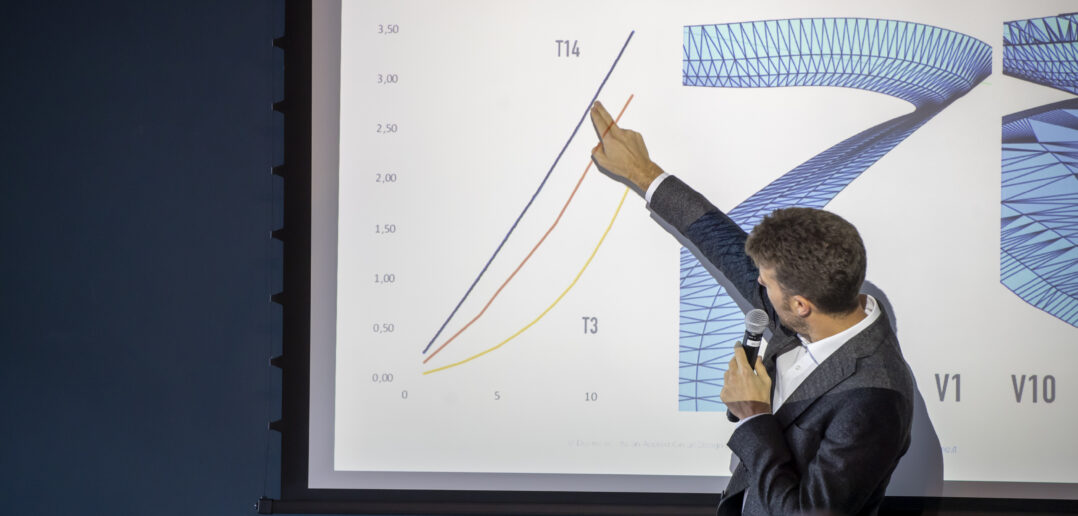
As the sporting director of DGP, Lammers explains how the organization is composed. “There are three main entities in this alliance: Circuit Zandvoort, Sport Vibes and TIG Sports. Sport Vibes is a sports marketing agency specialized in large events like the Red Bull Knockout [dirt bike] beach race; TIG is also experienced with promoting international events like the KLM Open golf tournament. Because an operating budget was another important requirement at that stage, we needed a partner for the reconstruction of the track and the facilities around it. VolkerWessels was willing and able to become a partner, and because of the positive experiences of the FIA with Italian design firm Dromo, we teamed up with them as well.” Despite having all the right people in the right places and a local government that was keen to support the event, there was still no certainty about a 2020 Dutch Grand Prix and there were countless hurdles to overcome.
Banked corner
Responsible for the redesign as the owner of Dromo Circuit Design, based in the Italian Motor Valley, Jarno Zaffelli explains, “With a historic track like Zandvoort there is always an important heritage, so the expectations were high. Tracks like these don’t leave you without emotions. We recently redesigned Silverstone and had to deal with a similar situation and we received lots of positive reactions to our results. The last corner at Zandvoort before the main straight is the Arie Luyendijk corner and in 2018 the FIA, represented by Charlie Whiting, were looking for ways to make the main straight longer, but without success. They suggested changing the last corner but the ideas didn’t satisfy the track managers. Then [track manager] Niek Oude Luttikhuis mentioned a banked corner. Charlie was willing to look into that and we managed to come up with plans while sticking to FIA requirements.”
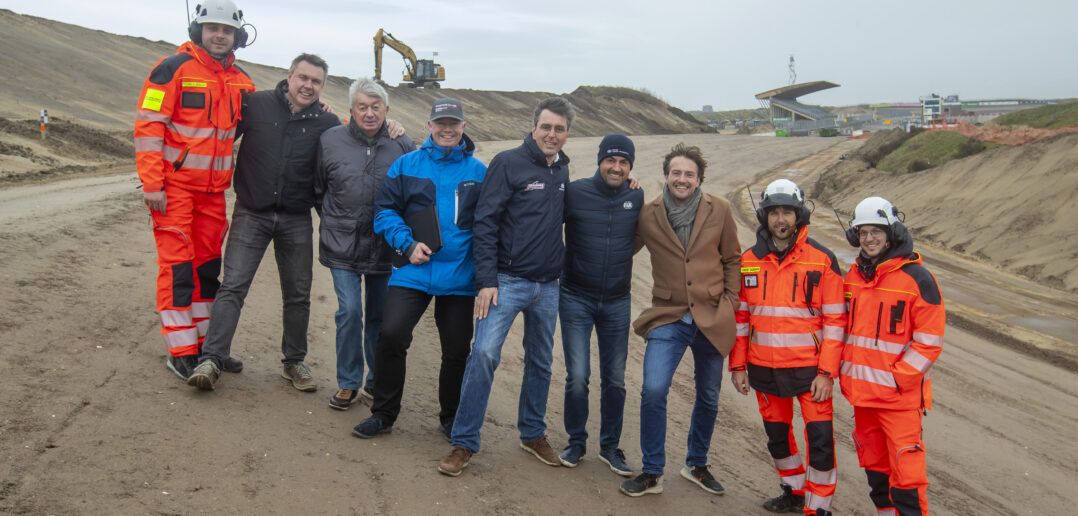
The result is a long, flowing corner banked at 18°, which means that the top of the track is 4.5m higher than the bottom. After Whiting’s untimely death, Michael Masi took over his role, but by that point a lot of the plans were already finalized. “Last February during F1 testing in Barcelona, I became aware of the decision to put Zandvoort on the calendar,” says Masi, who is race director, safety delegate and permanent starter at the FIA for the F1 World Championship. “My first visit to Zandvoort was during the Max Verstappen days that year and I did like the track. The plans for the banked corners were before my time, obviously, so my main focus was on the overall safety of the track as it had not hosted an F1 race for a very long time. A lot of work needed to be done on the debris fences, the different types of barriers and the run-off areas.”
Flying Dutch
With decades of experience in large road construction operations, VolkerWessels delegated no fewer than five daughter companies: KWS, Gebr. Van Kessel, Holland Scherm, Kondor Wessels Amsterdam and De Groot Vroomshoop. Marnix Drysdale from VolkerWessels, also responsible for the sponsoring contract the firm has with the Dutch Grand Prix, explains, “We got involved with the planning in the early stages, around January of 2019. After a few months, we knew we had to start working by November at the latest, to be able to make the deadline of March 2020. The reason we are using five partners is the diversity of all the different reconstruction activities. KWS has a leading role in the project and they are responsible for resurfacing the track. Holland Scherm does the new pedestrian tunnels, which they construct in-house and then transport to the track. De Groot Vroomshoop built a medical center completely out of wood and that building was also constructed before it was moved to Zandvoort.”
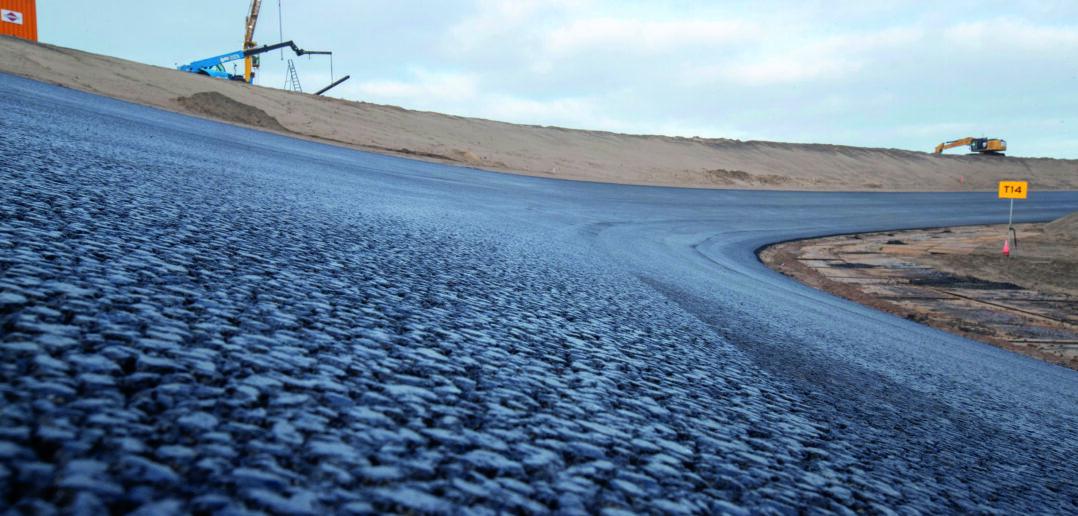
Surprisingly, the banking in the corners was not a real challenge for VolkerWessel. “We had to talk to our technicians and contact the manufacturers of our equipment to make sure we were not potentially breaking anything or voiding warranties when going past a certain number of degrees on the banking, but that was not the case and so we were able to grant Zandvoort’s and Dromo’s wishes,” says Drysdale.
With such smooth progress, Zaffelli became quite ambitious and suggested another candidate for an even more challenging form of banking, the famous but very tight Hugenholz corner, named after the circuit director from 1949 to 1974 and the designer of Suzuka. “We not only increased the width of this corner toward the inside but also gave it a progressive banking with a maximum of 34% on the outside.” Zaffelli is positive there will not be any problems due to excessive tire wear because of the angles, as some publications suggested while referring to the Bridgestone tire debacle at Indianapolis in 2005.
“We worked in close collaboration with Pirelli and a number of experienced drivers, who I cannot mention. We could not find any potential problems at all. It is important to know that in a banked corner, you change the lateral load on the tires to a vertical load, so there will possibly be less instead of more wear on the tire surface. We also developed a bespoke asphalt mixture for Zandvoort that we called the Flying Dutch. We only license this to our Dutch customer. When the track is finished, about half of it will be covered with Flying Dutch while the other half remains unchanged as this layer was installed only a couple of years ago.” Ultimately, the FIA has opted not to use DRS on the corner for the circuit’s first return race.
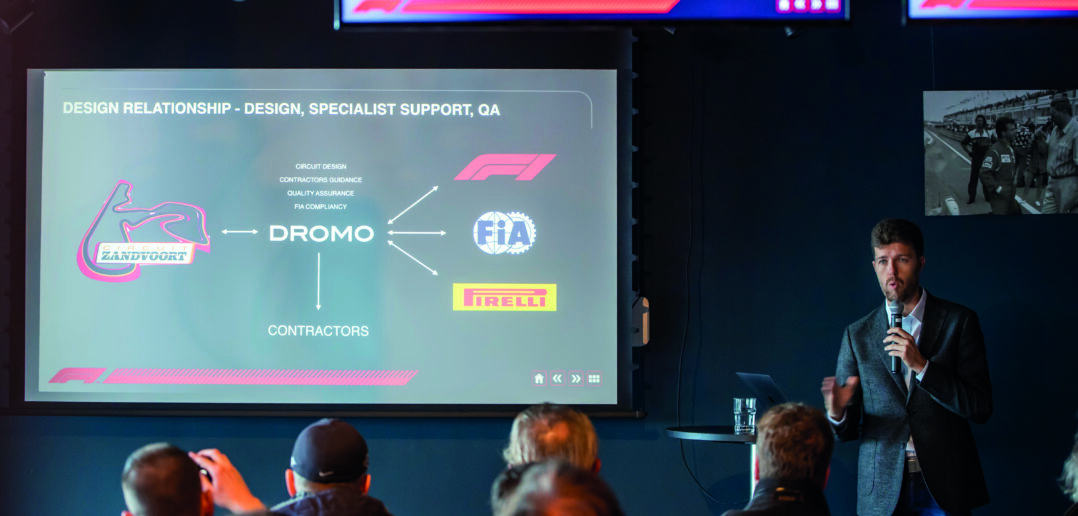
With such spectacular corners that will be unique in Formula 1, DGP Race BV and Zaffelli are positive that the Dutch Grand Prix will be a spectacular one that might become one of the favorites on the calendar. ”We are very proud of what we achieved in a relatively short time and it is nice to see that the Formula 1 history of Zandvoort will be reactivated. I started my career here as a kid and have driven Grand Prix here myself, so being part of the organization that brings back Formula 1 to my hometown track is a fantastic honor,” concludes Lammers.
Street track origins
Although the Zandvoort track was opened in 1948, its history dates back much further, to June 3, 1939, when an international race was organized for the first time in the Netherlands. Because the event was held on the local streets and a few thousand visitors came to watch it, the mayor decided a permanent track was needed. These plans were delayed by World War II, but Mayor Van Alphen convinced the occupying Germans that the track would include a ‘Paradestrasse’ – a ceremonial avenue – for the victors, without specifying to whom he was referring. Construction of the track started in 1946, using the rubble from destroyed houses in the village as the foundation. On August 7, 1948, the first race was held on the new permanent track, but this did not count toward the world championship. In 1949, Luigi Villoresi won the first official ‘Grote prijs van Zandvoort’ (Grand Prix of Zandvoort) in a Ferrari 125, but it would take until 1952 before the Dutch Grand Prix became part of the official world championship. The last Formula 1 Grand Prix in the Netherlands was held on August 25, 1985, when Niki Lauda claimed victory driving a McLaren MP4/2.


